What is the best tablet you can buy?
Tablets are one of tech’s most versatile purchases. You can use them to watch films, send emails, browse the web or even make music. If the size of your phone screen just doesn’t cut it and you don’t want a laptop, then a tablet is the perfect companion.
There are many great tablets out there – iPads are obvious choices – but there are several we’d recommend for you, depending on your budget, needs and taste in design. And of course, there are many terrible tablets out there too, but rest assured – none of those features in our ranked chart.
Best Tablets 2021
Apple iPad Air (2020) – Best overall
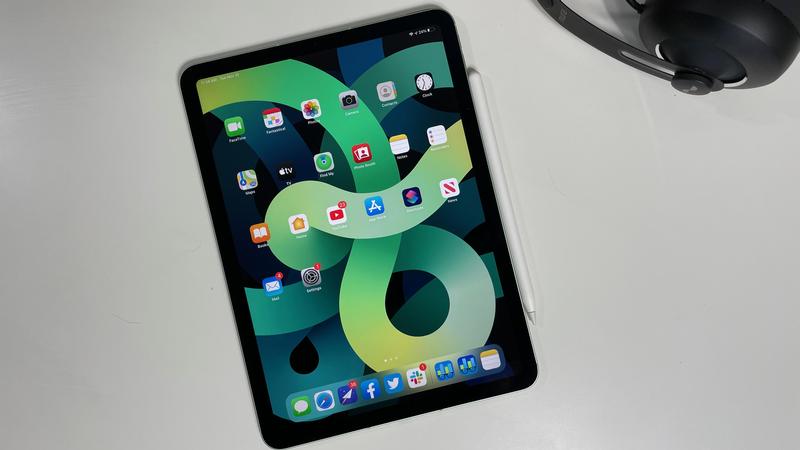
- Pros: Great design | Large display | Compatible with Pro accessories
- Cons: Awkward Touch ID placement | A little pricey | Thick bezels
The iPad Air 2020 is a huge glow up for Apple’s mid-range tablet, ditching the ageing design for something more industrial and modern.
Of course, it can’t quite compete with the 120Hz ProMotion display tech or Face ID on offer from the iPad Pro range, but if you can live without such luxuries, even one year on, the 2020 Air is still all the iPad most people will really need.
You get a great design, Touch ID, bright colour options, a gorgeous high-resolution full-screen display – albeit with slightly larger bezels than the Pro equivalent – and compatibility with both Apple’s Magic Keyboard and Apple Pencil, accessories previously exclusive to the company’s high-end tablets.
The A14 Bionic – the same chipset found in the iPhone 12 range – is still a beast that can handle just about anything you throw at it with ease, and although it’s not quite as powerful as the iPad Pro range or the company’s A15 or M1 chips, it still packs plenty of punch.
Read our full Apple iPad Air (2020) review
Apple iPad Mini (2021) – Best for portability
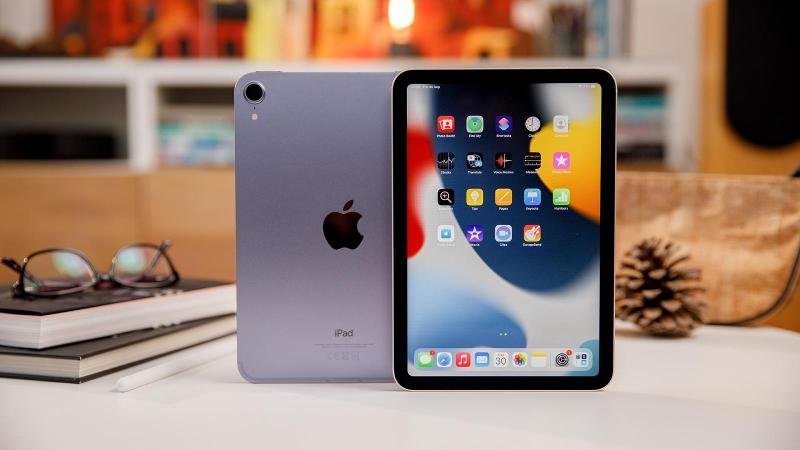
- Pros: Compact design | Apple Pencil support | Superb performance
- Cons: A little pricey | No Magic Keyboard support
The sixth-gen iPad Mini ditches the old form factor for something more akin to the iPad Air and Pro ranges; with an angular design, stereo speakers, Centre Stage technology and much smaller bezels than before.
The Mini’s 60Hz display has jumped to 8.3in, but without changing the physical size of the tablet – allowing for more display real estate without affecting its portable nature. It’s a gorgeous display too, with the highest pixel density of any iPad right now, even if it is a bit on the small side for true split-screen multitasking.
It’s powered by the same A15 Bionic silicon as the iPhone 13 range, making it more powerful than the iPad Air at a similar price.
The Touch ID sensor has been moved to the Power button – like with the iPad Air – and there’s support for the second-gen Apple Pencil to boot. However, the lack of a Smart Connector on the rear means that it doesn’t have its own Magic Keyboard; a real boon for the iPad Air and Pro ranges, and the only real chink in the Mini’s armour.
Read our full Apple iPad mini (2021) review
Apple iPad 10.2in (2021) – Ideal for productivity
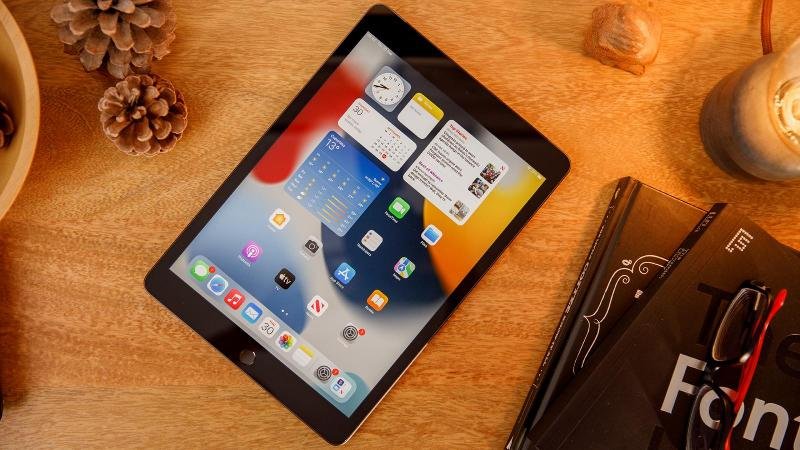
- Pros: Affordable | Large display | Great performance
- Cons: Dated design | Lacklustre cameras | Middling speakers
It might not be hugely different from the previous entry-level iPad, but Apple has yet again created a tablet that’s very hard to complain about.
If you’ve got the seventh or eighth-gen iPad, there might not be enough to tempt you, but there’s a lot to love here if you’re coming from an older device or want to dip your toe into the iPad experience.
The 10.2in screen offers TrueTone tech that’ll automatically adjust the colour balance based on your environment, and there’s improved colour accuracy too. There are also improvements to iPadOS, an upgrade to the A13 Bionic (the same chip as in the iPhone 11) and most importantly, Apple’s upgraded the base storage from an unusable 32GB to 64GB, while also offering up a 256GB model for those that need a little more space.
Considering the price hasn’t changed over the 2020 model, that’s an impressive feat for the budget iPad. Sure, it doesn’t have a laminated display, ProMotion display tech or an updated design, like pricier iPads but so long as you don’t care about such extras, this is a great entry point that won’t break the bank.
Read our full Apple iPad 10.2in (2021) review
Apple iPad Pro 12.9in (2021) – Best for artists
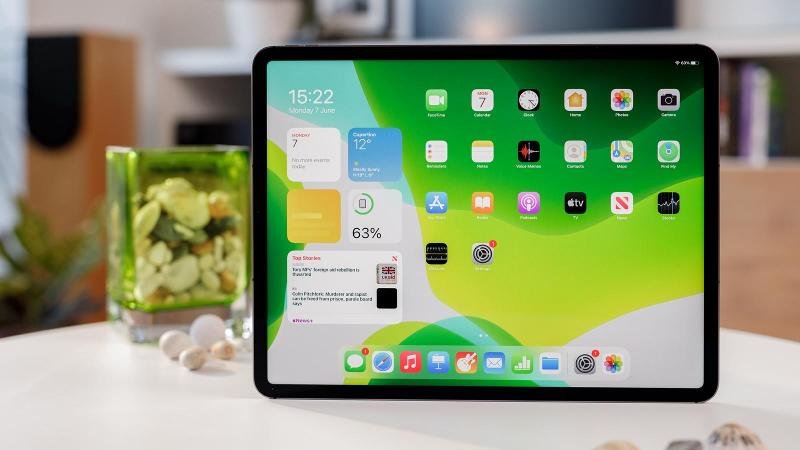
- Pros: Best-in-class display | Class-leading performance | Upgraded front camera
- Cons: Expensive | iPadOS can’t take full advantage of M1 chip
Apple’s 12.9in iPad Pro is the most powerful tablet on the market right now, with the Mac-based M1 chipset beating just about every competitor in benchmark tests. However, limitations of iPadOS – including screen mirroring, rather than screen extending – mean it can’t truly take advantage of all the power on offer.
The 120Hz micro-LED display (exclusive to the 12.9in model) is perfect for graphic design work and digital artistry, as well as watching movies and browsing social media. Meanwhile, the upgraded front-facing camera, with auto-tracking tech, is ideal for those working remotely.
Paired with the Magic Keyboard, it has the potential to be a true laptop replacement, but it’s a very pricey one, even surpassing the starting price of a MacBook Pro at the top end.
It’s undoubtedly Apple’s best tablet, but if you’re not going to get full use out of the large display and powerful internals, you’d probably be better off with a different iPad.
Read our full iPad Pro 12.9in (2021, M1) review
Samsung Galaxy Tab S7+ – Best for Android
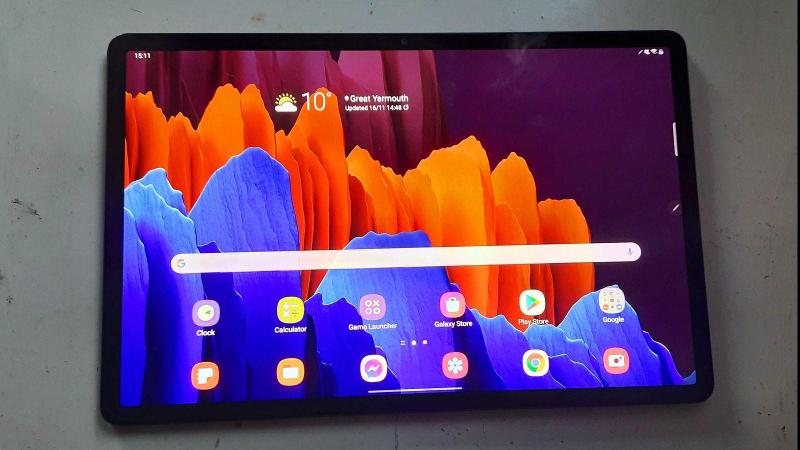
- Pros: Stunning display | Stellar performance | Great speakers
- Cons: Middling software optimisation | S-Pen charging is awkward
Samsung’s most accomplished tablet to date, the Galaxy Tab S7+ nails the fundamentals with its display, performance and design, whilst also boasting exciting embellishments in the form of excellent stereo speakers and a solid in-display fingerprint scanner.
You also get a decent set of cameras and the impressive S-Pen stylus in the box, but the software is something of a weak point. Not for lack of trying on Samsung’s part, many apps on the Google Play Store simply aren’t optimised for Android tablets, so you just get scaled-up clones that waste screen real-estate and lack any additional functionality of the Tab’s large 12.9in panel.
While such quirks won’t likely be a dealbreaker for most people, when you consider how polished apps on iPadOS handle, by comparison, the Tab S7+ does become a little harder to recommend.
Read our full Samsung Galaxy Tab S7+ review
Apple iPad Pro 11in (2021) – Superb performance
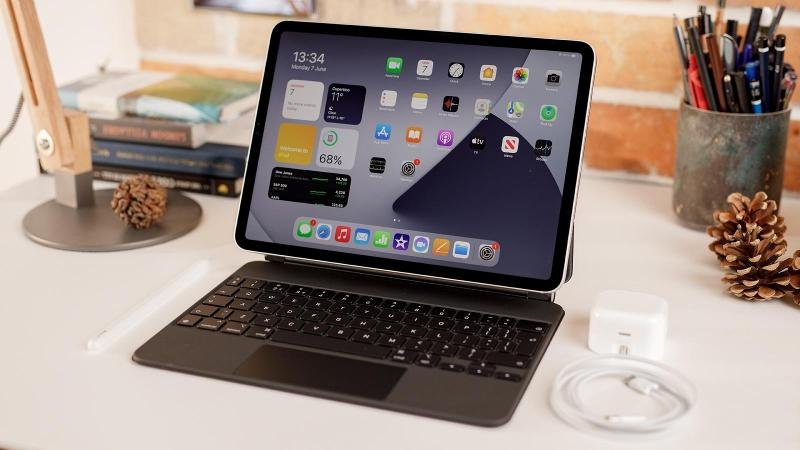
- Pros: Class-leading performance | Highly portable | Centre Stage
- Cons: Expensive | iPadOS can’t take full advantage of M1 chip
If the iPad Pro 12.9in is a little too big for your tastes, the iPad Pro 11in may make for a better fit.
It has most key features of the 12.9in Pro, including a 120Hz ProMotion display, the Mac-based M1 chipset, the Centre Stage tech that tracks you when using the front camera and even its own Magic Keyboard.
The only real difference is in the display department, where the 11in model features the same IPS tech as previous years, while the 12.9in version benefits from a more advanced micro-LED setup.
That’s not to say the iPad Pro 11in doesn’t feature a phenomenal viewing experience. It’s bright, crisp, detailed and ideal for creatives on the go, especially with Apple Pencil support; it just isn’t quite as vibrant as the larger 12.9in model’s panel.
Still, if that’s an acceptable shortcoming in your eyes, the M1-powered 11in iPad Pro is an incredibly capable tablet, touting some of the best benchmark results we’ve ever seen from a slate; making it perfect for both work and play.
Read our full iPad Pro 11in (2021, M1) review
Xiaomi Pad 5 – Great all-rounder
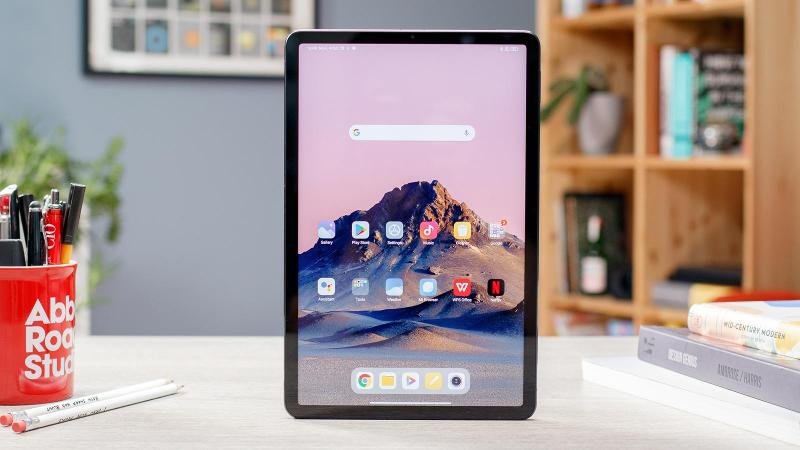
- Pros: Stunning display | Good performance | Slim design
- Cons: Lacklustre selfie camera | MIUI not for everyone
It’s been a while since Xiaomi offered up a slate on the global stage but its return to the tablet space – in the form of the Xiaomi Pad 5 – is pleasingly compelling.
The tablet boasts a thin design that’s fronted by a gorgeous 2.5K 120Hz display and comes backed up by great stereo speakers and solid performance to boot.
Just as with its phones, Xiaomi’s tablet-optimised take on its MIUI user experience won’t suit everyone but it’s wholly usable, and while the added connectivity found on the Chinese models doesn’t make it to most markets internationally, there’s still little else on the Android side of the fence we’d recommend, especially around the Pad 5’s asking price.
Read our full Xiaomi Pad 5 review
Lenovo Tab P11 Pro – Great for entertainment
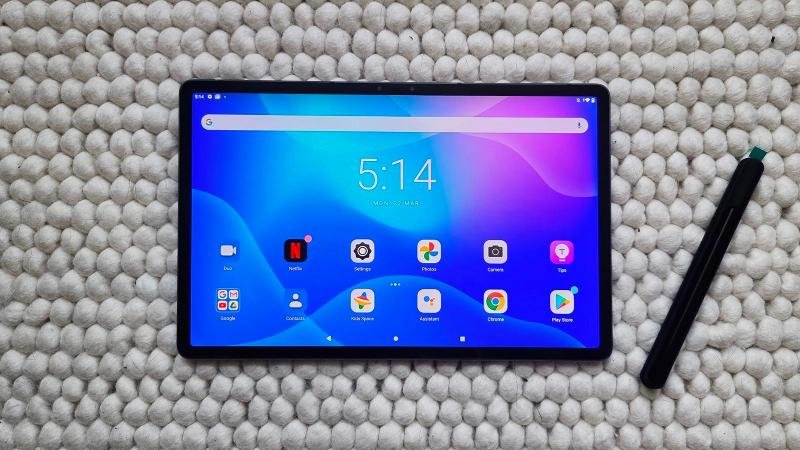
- Pros: Great design | Solid battery life | Superb display
- Cons: Middling software optimisation | Key accessories cost extra | Underpowered
The Lenovo Tab P11 Pro is a great choice for media-lovers, thanks to its superb display, solid quad-speaker setup and respectable battery life.
The additional flexibility afforded to users by the dedicated keyboard cover and the Lenovo Precision Pen 2 widens the Tab’s appeal too, but they don’t come as standard unless you pay extra for a bundle.
If it weren’t for the fact that it feels a little underpowered and the UI quirks that we ran into during testing, this would be an immediate alternative recommendation to the likes of Samsung’s Galaxy Tab S series.
Read our full Lenovo Tab P11 Pro review
Microsoft Surface Pro 7 – Best for Windows
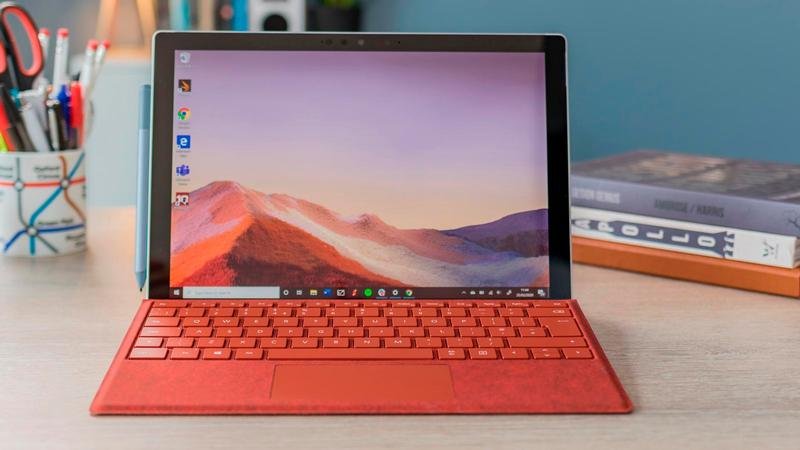
- Pros: Portable 2-in-1 design | Huge performance jump over predecessor
- Cons: Pricey | Key accessories cost extra
The Surface Pro 7 is a powerful tablet that doubles as a decent laptop if you opt for the Type Cover case, although trying to actually use it in your lap is a challenge not many will succeed with.
The improved internals and upgraded graphics are where the Pro 7 really shines. It’s certainly more powerful than the Pro X, and it’s a massive jump forward from the Surface Pro 6 too. It’s still not a gaming laptop, mind you, and cheaper standard laptops can offer more in terms of raw power, however, you’ll lose that versatile design by going that route.
If you’re going to get the use out of the portability and flexible nature of this 2-in-1, then the Pro 7 is worth considering, that said, there are more powerful laptops at a similar price, if processing grunt is key.
Our review of the Surface Pro 8 is also on the way but its release also spells price cuts for the 7 Pro, which is something to keep in mind.
Read our full Microsoft Surface Pro 7 review
Amazon Fire HD 10 (2021) – Most affordable
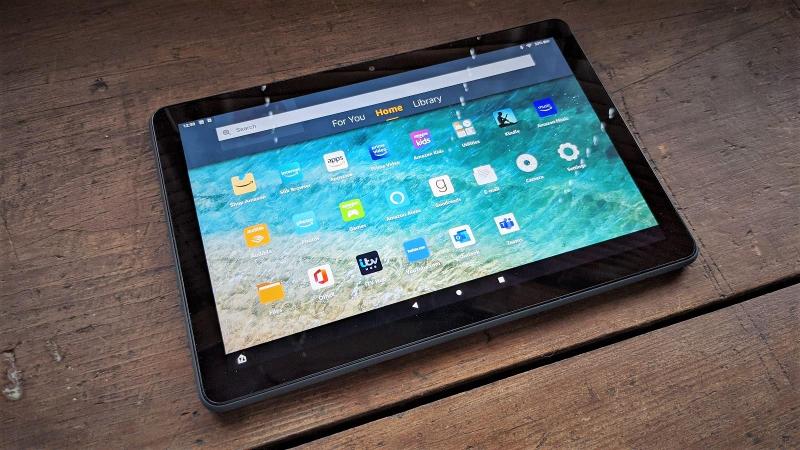
- Pros: Stylish & lightweight | Good performance | Nice screen
- Cons: Limited apps | Slow charging | Basic cameras
Amazon has refreshed its 10in Fire tablet once again, and while, as ever, there’s a model that’s tailor-made for kids, there’s also now a bundle that places a focus on productivity, which includes a Bluetooth keyboard and year’s subscription to Microsoft Office 365.
Even without the extras, the HD 10 is still a great budget entertainment slate, also boasting better performance and better cameras to boot. It also features always-on Alexa support, so you can fire off queries, even when the HD 10’s display is off.
You have the option of a Plus model with wireless charging and it does better than expected as a productivity machine, but in every case, the tablet’s low price tag versus more conventional Android-based competition comes with the caveat that Fire OS doesn’t support Google Play Store apps natively, so you won’t necessarily find all the experience you’re looking for with this slate (i.e. check before you buy).
Read our full Amazon Fire HD 10 (2021) review
Your buying guide to the best tablets in 2021
While Apple has something of a hold on the tablet conversation, there are great Android alternatives from Samsung, Xiaomi and Amazon. And if you need a tablet with full Windows, Microsoft is there for you with Surface.
Should I buy an Android, Windows or iPadOS tablet?
If you’re on a tight budget, you should be reading our best budget tablets roundup. And if you’re looking for a tablet for your child, check out our best kids’ tablets article.
But if you want the best, you’ve got four main choices: an iPad, an Android tablet, an Amazon Fire tablet or a Windows tablet.
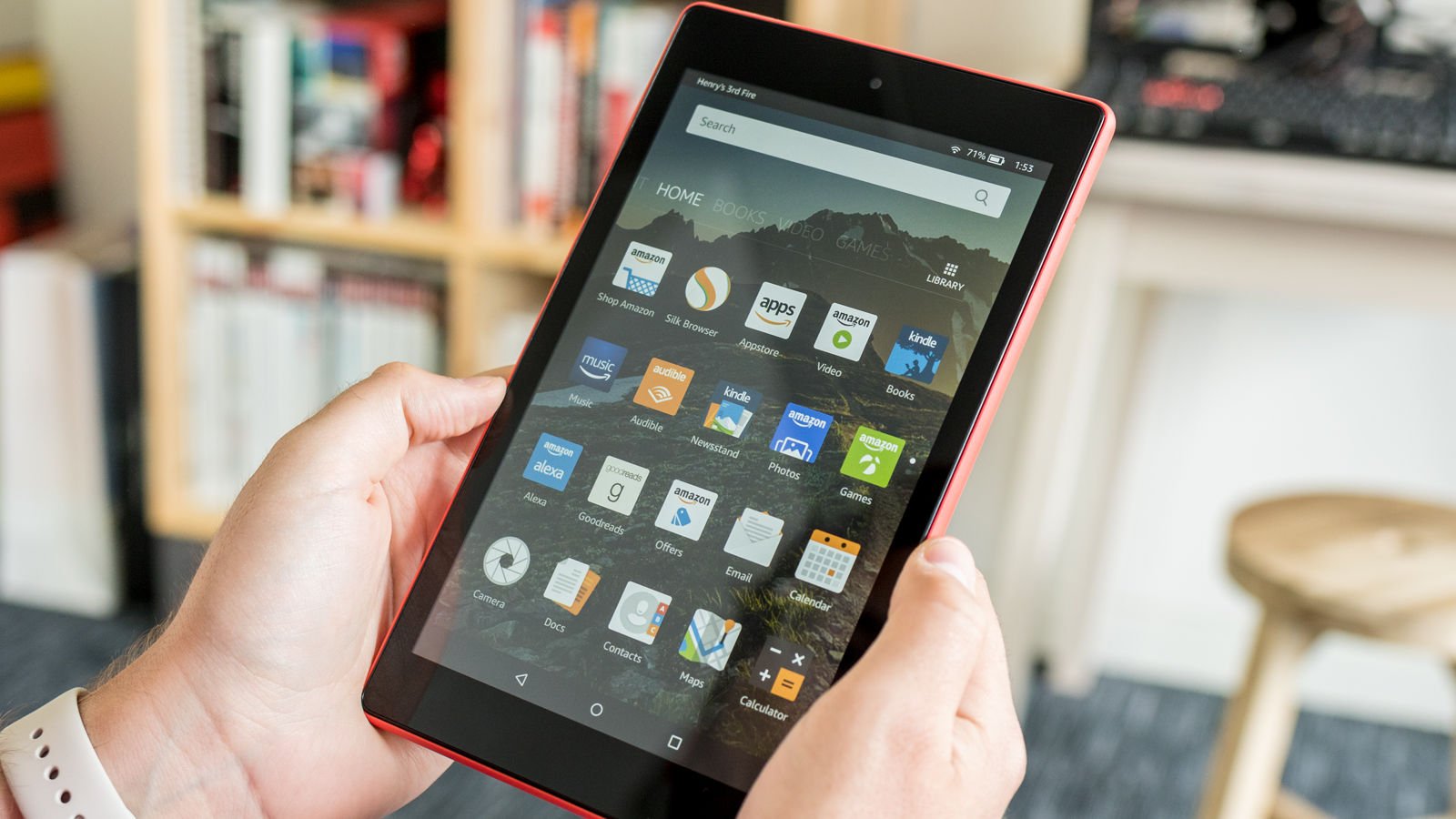
Apple iPads run the company’s own iPadOS, which is widely regarded as one of the best…
